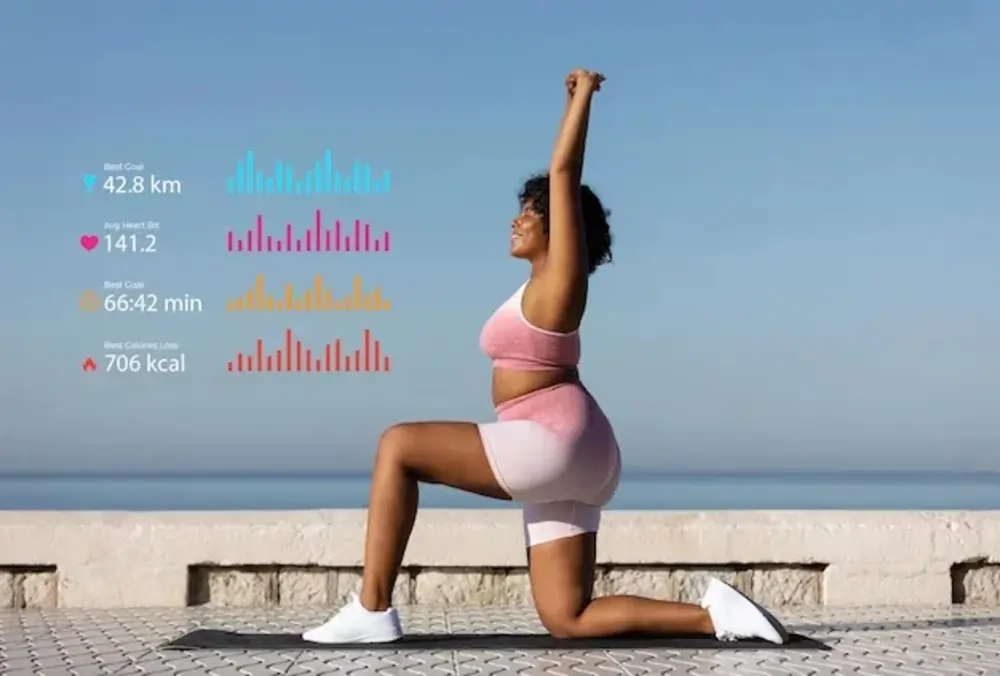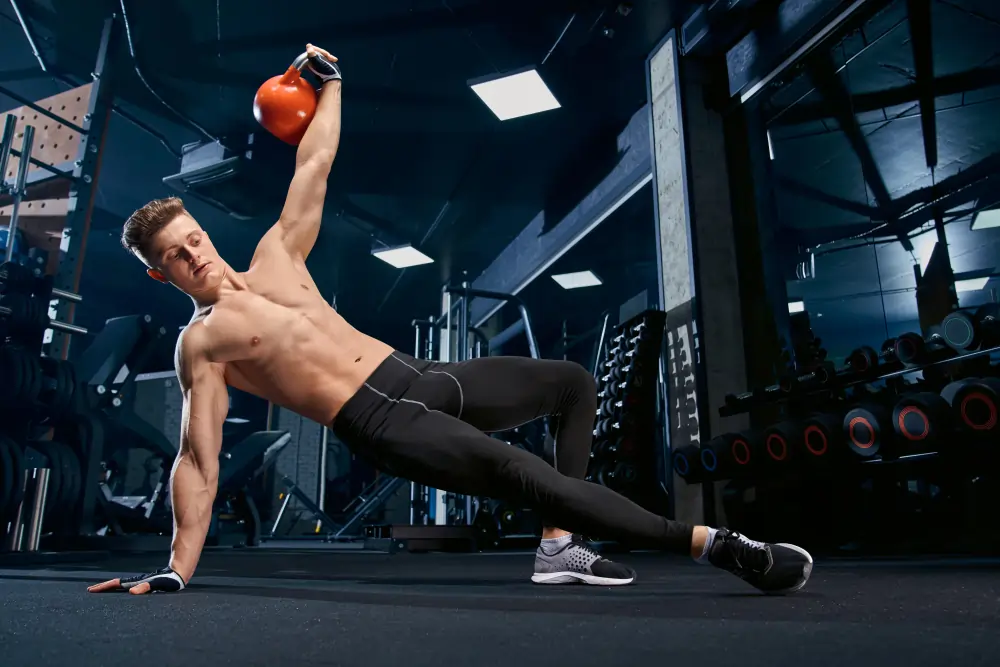
Practicing yoga at home can be a rewarding and fulfilling experience. It allows you to create a personalized practice that suits your needs and schedule. Here’s a beginner’s guide to help you get started:
Why Practice Yoga at Home?
There are several benefits to practicing yoga at home. Firstly, it offers flexibility in terms of time and space. You can choose a time that suits you best and practice in the comfort of your own home. Additionally, practicing at home allows you to customize your practice according to your preferences and needs. You can focus on specific areas of your body or work on particular poses.
Setting Up Your Yoga Space Creating a dedicated space for your yoga practice is essential. Find an area in your home that is quiet, uncluttered, and has enough room for your yoga mat. Ideally, you should be able to stretch out your arms to the sides without hitting anything. You can enhance your space by adding elements like candles, incense, or soothing music to create a calming ambiance.
Essential Yoga Props While you don’t need any props to practice yoga, having a few basic ones can enhance your practice. The essential props include a yoga mat, strap, blocks, blanket, bolster, etc. These props can help you modify poses, provide support, and deepen your stretches.

Starting Your Practice Beginners should start with basic sequences and gradually build up their practice. Set realistic goals and start with small pockets of time, such as 10-15 minutes per session. As you become more comfortable, you can gradually increase the duration of your practice.
Online Resources There are numerous online resources available that offer guided yoga classes and tutorials. You can find videos on platforms like YouTube or subscribe to dedicated yoga apps or websites. These resources provide a wide range of classes for different levels and styles of yoga.
Staying Consistent Consistency is key when practicing yoga at home. Set a regular schedule for your practice and stick to it as much as possible. Even short daily sessions can have significant benefits for both your physical and mental well-being.
6 Popular Yogasana
Mountain Pose (Tadasana): Stand tall with your feet together, grounding them into the mat. Keep your spine straight, shoulders relaxed, and arms by your sides.
Downward Facing Dog (Adho Mukha Svanasana): Start on your hands and knees, then lift your hips up and back to form an inverted V shape. Press your palms into the mat and keep your heels grounded.
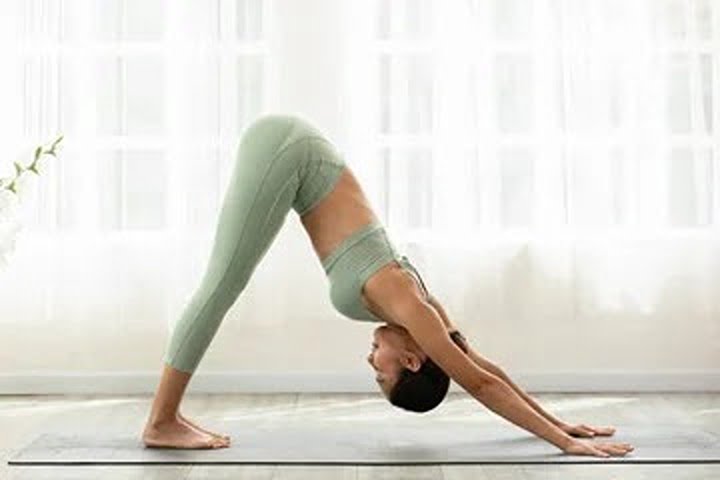
Child’s Pose (Balasana): Kneel on the mat, then sit back on your heels and fold forward, resting your forehead on the mat. Extend your arms in front of you or alongside your body.
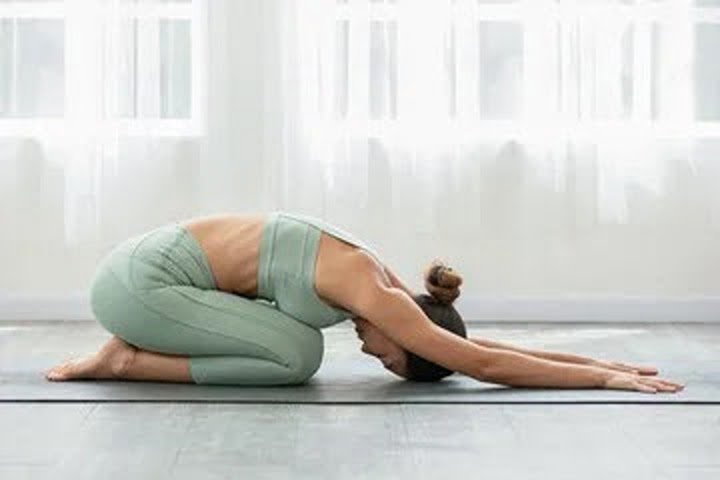
Cobra Pose (Bhujangasana): Lie face down on the mat with your palms flat near your shoulders. Press through your hands to lift your chest off the ground, keeping your elbows close to your body.
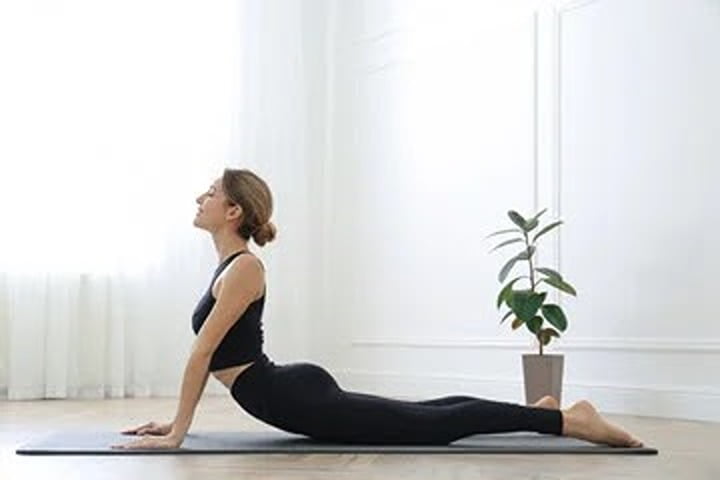
Tree Pose (Vrikshasana): Stand tall with your feet together, then shift your weight onto one leg. Place the sole of your other foot on the inner thigh or calf of the standing leg. Bring your hands together at your heart center.
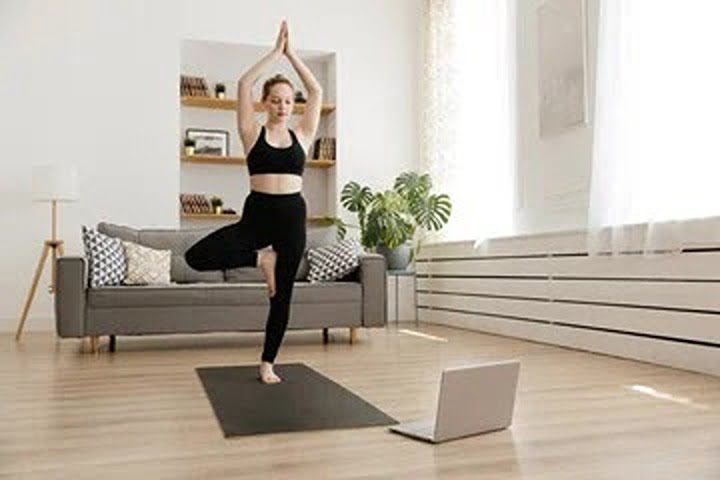
Warrior I (Virabhadrasana I): Step one foot forward into a lunge position, keeping your back foot turned out slightly. Raise both arms overhead, keeping your front knee bent and aligned with your ankle.

6 Advanced Yoga Poses
Flying Pigeon Pose (Eka Pada Galavasana): This pose challenges your balance and core strength as you balance on your hands with one leg extended back and the other leg bent and resting on your upper arm.
Crane Pose (Bakasana): In this pose, you balance your body on your hands with your knees resting on the back of your upper arms. It requires arm and core strength, as well as focus and concentration.
Scorpion Handstand Pose (Vrschikasana): This pose combines a forearm stand with a backbend, requiring flexibility, strength, and control. It is an advanced inversion that challenges your upper body and core.

Mermaid Pose (Eka Pada Rajakapotasana): This pose is an advanced variation of the pigeon pose, where you bend one leg back and reach for your foot with the opposite hand. It requires hip flexibility and balance.

Eight-Angle Pose (Astavakrasana): This arm balance poses challenges to your core strength, arm strength, and flexibility as you twist your body and balance on your hands.

Toe Stand Pose (Padangustasana): In this pose, you balance on the balls of your feet with your heels lifted off the ground while bending forward. It requires ankle strength, flexibility, and focus.

Please note that these poses are advanced and require proper warm-up, guidance, and practice. It’s important to listen to your body, work within your limits, and seek guidance from a qualified yoga instructor when attempting advanced poses.
Conclusion
Starting a home yoga practice can be a rewarding and empowering way to enhance your well-being. By practicing yoga at home, you can enjoy the benefits of self-knowledge, self-help, self-indulgence, and exponential growth. You can also save time, money, and hassle by avoiding the commute and the crowds of a yoga studio or gym. However, a home yoga practice also requires some planning, preparation, and discipline. You need to choose a convenient time, a comfortable place, and a suitable style of yoga for your needs and goals. You also need to gather some basic tools, such as a yoga mat, a strap, a block, and a bolster, to support your practice. You can find many online resources, such as videos, podcasts, books, and apps, to guide you through different yoga sequences and poses. You can also create your own sequences by following some general principles, such as warming up, balancing, and cooling down. The most important thing is to listen to your body, respect your limits, and have fun!
FAQs
Q: How long should I practice yoga at home?
A: There is no fixed rule on how long you should practice yoga at home. It depends on your schedule, your energy level, and your personal preference. You can practice for as little as 10 minutes or as long as 90 minutes, or anything in between. The key is to be consistent and practice regularly, even if it’s just a few minutes a day.
Q: What are some of the best yoga poses for beginners?
A: Some of the best yoga poses for beginners are those that are easy to do, safe, and effective. They should also help you build strength, flexibility, balance, and awareness. Some examples are:
- Child’s pose (Balasana): A relaxing pose that stretches the back, hips, and thighs, and calms the mind.
- Cat-cow pose (Marjaryasana-Bitilasana): A dynamic pose that moves the spine, shoulders, and neck, and massages the internal organs.
- Downward-facing dog (Adho Mukha Svanasana): A foundational pose that strengthens the arms, legs, and core, and lengthens the spine and hamstrings.
- Mountain pose (Tadasana): A standing pose that improves posture, alignment, and stability, and prepares the body for other poses.
- Warrior II (Virabhadrasana II): A powerful pose that stretches the legs, hips, and chest, and builds confidence and focus.
Q: How can I avoid injuries while practicing yoga at home?
A: To avoid injuries while practicing yoga at home, you should follow some basic safety tips, such as:
- Warm up properly before starting your practice, and cool down gradually at the end.
- Don’t force yourself into any pose that causes pain or discomfort, and modify or skip any pose that doesn’t suit you.
- Use props, such as a strap, a block, or a bolster, to help you achieve the correct alignment and support in the poses.
- Breathe deeply and smoothly throughout your practice, and never hold your breath.
- Pay attention to your body’s signals, and stop or rest if you feel dizzy, nauseous, or unwell.
Q: How can I stay motivated to practice yoga at home?
A: Staying motivated to practice yoga at home can be challenging, especially if you have distractions, interruptions, or other commitments. However, you can try some strategies to keep yourself inspired and accountable, such as:
- Set a specific time and place for your practice, and stick to it as much as possible.
- Create a ritual or a routine around your practice, such as lighting a candle, playing some music, or setting an intention.
- Track your progress and celebrate your achievements, such as mastering a new pose, holding a pose longer, or feeling more relaxed.
- Invite a friend, a family member, or a pet to join you in your practice, or join an online community of fellow yogis.
- Vary your practice by trying different styles, sequences, and poses, or by adding some challenges or fun elements.
Q: How can I deepen my home yoga practice?
A: Deepening your home yoga practice means going beyond the physical aspects of yoga, and exploring the mental, emotional, and spiritual dimensions. You can deepen your home yoga practice by:
- Learning more about the philosophy, history, and ethics of yoga, and applying them to your daily life.
- Practicing meditation, mindfulness, and breathwork, to cultivate inner peace, clarity, and awareness.
- Practicing gratitude, compassion, and kindness, to yourself and others, and to the world around you.
- Practicing self-inquiry, reflection, and journaling, to discover your true self, your purpose, and your potential.
- Practicing devotion, service, and generosity, to express your love, gratitude, and joy.




